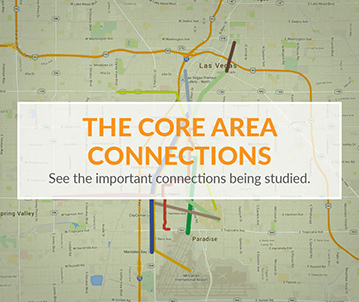
Las Vegas Needs a Mobility Plan
Las Vegas is a great destination and an even better place to live. From its iconic Strip to its vibrant Downtown to a university that continually innovates and drives change, it has achieved the hallmarks of a world-class city.
Yet in our grand tradition of never settling, we gathered a group of thought leaders together around one simple question: What can we do today to secure a better future for the Las Vegas of tomorrow? The result is the Transportation Investment Business Plan (TIBP) – Go FAST. Go FORWARD. Go VEGAS.
What is the Transportation Investment Business Plan?
The TIBP articulates a vision for a world-class, multimodal transportation system that will keep Las Vegas competitive for generations to come. We began by studying peer cities from around the globe to identify state-of-the art mobility options and understand best practices in urban planning. This research confirmed that innovations in transportation and infrastructure are essential to securing a city’s long-term economic growth and sustainability. Las Vegas is no different. In fact, because Las Vegas has naturally evolved with a narrow focus on limited transportation options, it has even greater potential to be transformed.

What was studied?
To outsiders, Las Vegas is synonymous with the world-famous Las Vegas Strip. But we know our city has so much more to offer. So while the TIBP area of study includes the Strip and the surrounding Resort Corridor, it also focuses on the Las Vegas Convention Center, UNLV’s campus, Downtown and McCarran International Airport. We call this “The Core Area,” our Valley’s economic center.
Visit the Map Room to learn more about the TIBP Core Area of study and the economic centers that drive growth in Southern Nevada.
Why is the TIBP important? Why now?

In the coming years, Las Vegas will become an even more dynamic and vibrant city. Only one thing is missing: a multimodal transportation system that seamlessly connects activity centers in the Core Area. The TIBP provides a plan for a transportation system that will make Las Vegas a better place to live, work, visit and do business. But convenience is only one of the benefits. This plan will also provide a foundation for growth that will help diversify our economy and ensure that we remain globally competitive.
Who was involved?
Led by the Regional Transportation Commission of Southern Nevada (RTC), the TIBP involved a diverse group of leaders and stakeholders from across Southern Nevada.
See who’s involved in the TIBP.
This collaboration had a singular goal: to create an efficient, high-quality transportation experience that is uniquely Las Vegas. The outcome of this effort is a business plan to guide regional infrastructure investment and economic development.
How will the TIBP outcomes be funded?
To realize the growth enabled by projects recommended in the TIBP, Las Vegas will need to leverage existing funding and financing opportunities, implement new and innovative strategies and foster collaboration between the public and private sectors. This approach has worked successfully in other cities that have launched projects of similar scope, including Denver, San Francisco, San Diego and Phoenix. Recommendations proposed in the TIBP could be funded by a blend of any of the following mechanisms:
- Federal Funding & Financing: TIBP projects may qualify for grants from the Federal Transportation Administration, Federal Highway Administration, Federal Aviation Administration, U.S. Department of Transportation and a number of specialized assistance programs.
- State/Local Funding & Financing: Revenue from the Government Services Tax, Resort Corridor existing room tax that is dedicated for transportation, Sales Tax, Fuel Revenue Indexing. Additional funding sources include farebox revenues, naming rights and advertising, parking fees and other revenue from the Las Vegas Monorail Company.
- Alternative Funding Sources: Contributions from private investment and public-private partnerships.

